What Is the Ideal Ride Height for F1 Cars? Exclusive
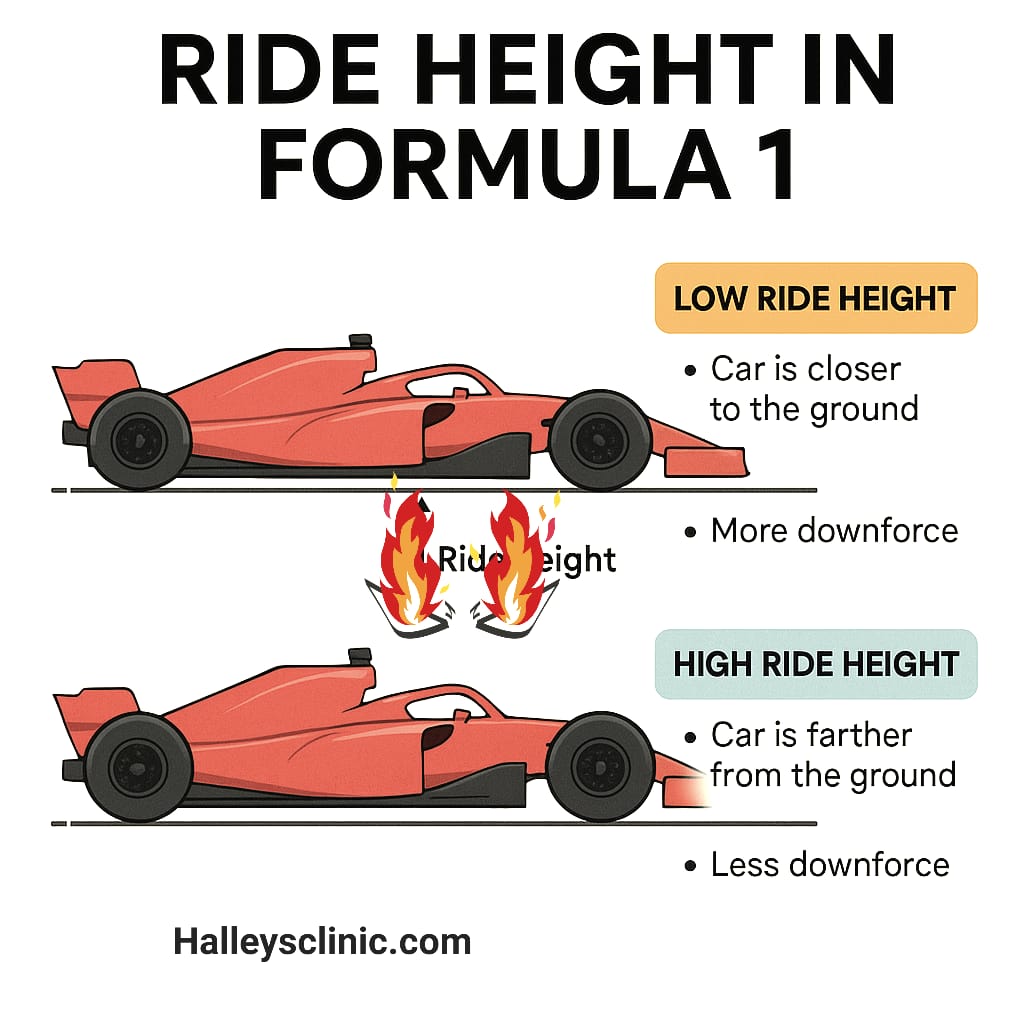
- By Dr. AK Rana
Ride height is the distance between the bottom of the F1 car’s floor (usually the skid block or plank) and the track surface.
…
Low ride height: Car is closer to the ground.
High ride height: Car is farther from the ground.
…
Does Ride Height Change?
Yes, dynamically, due to:
- Speed (downforce compresses the suspension).
- Load (cornering, braking, acceleration).
- Fuel load (car is heavier at the start of race).
- Track bumps or curbs.
- Driver setup adjustments (manually chosen pre-race).
…
PHYSICS BEHIND RIDE HEIGHT & ITS EFFECTS:
1.Ground Effect & Aerodynamics
Venturi Effect
The F1 floor is shaped like an upside-down wing (venturi tunnels).
When air flows under a low ride height, the narrow space accelerates airflow, reducing pressure (Bernoulli’s principle), which sucks the car to the ground = more downforce.
Low Ride Height
More ground effect downforce (better cornering grip).
Risk of bottoming out or porpoising (bouncing).
…
High Ride Height
Safer from bouncing.
Less downforce, higher lap times.
…
2. Mechanical Grip and Handling
Lower ride height = lower center of gravity ➝ less body roll ➝ better balance during corners.
But too low can reduce suspension travel, making the car unstable on bumps.
…
3. Tire Behavior
Too low ride height:
Increased downforce can overload the tires = overheating.
Too high:
Less pressure on tires = reduced grip, especially under braking/turning.
…
4. Bottoming Out
If the ride height is too low, the car’s floor hits the ground, causing:
Sparks (from titanium skid blocks).
Loss of downforce (airflow disrupted).
Damage to the plank
Reduced stability.
…
5. Porpoising
Airflow stalls and reattaches repeatedly when ride height changes too quickly at high speeds.
The car bounces vertically, like a dolphin, causing driver discomfort and aero instability.
…
6. Drag vs Downforce Trade-off
Lower ride height = more downforce, but more surface area close to track ➝ higher drag.
Engineers aim to find a sweet spot: maximum downforce with minimum drag.
…
What Ride Height Is Used at the Hungarian GP?
Moderately high ride height compared to low-downforce tracks like Monza.
Why?
1. The track is bumpy, so teams need more suspension travel to avoid bottoming out.
2. Lots of tight corners → mechanical grip > top speed → aerodynamic efficiency is less important than cornering stability.
3. Kerb riding is essential (e.g., Turns 4, 6, 11) → higher ride height allows aggressive kerb use without floor damage.
…
Scenario A: Too Low Ride Height at Hungaroring
What Happens?
…
On the bumps in Turns 1, 4, and 11, the car bottoms out.
The floor scrapes the track → plank wear.
The airflow under the floor gets disturbed → sudden loss of downforce mid-corner.
Driver feels unstable turn-in or mid-corner snap.
Result:
Inconsistent handling.
Tire overheating due to sudden grip loss.
Slower lap time.
…
Scenario B: Optimized Ride Height for Hungary
Ride height is slightly higher than typical low-speed tracks.
Benefits:
…
Allows better kerb usage in the chicane (Turns 6–7) without destabilizing the car.
Stable ride over bumps and into hairpins (like Turn 1 and Turn 13).
Maintains aerodynamic seal under the floor just enough for consistent ground effect without porpoising.
Result:
Driver can push harder with confidence.
Consistent grip across corners.
Better tire wear and balance through the race.
F1 teams use computational fluid dynamics (CFD), wind tunnel testing, and track data to tweak ride height within a few millimeters. The smallest change can gain or lose tenths of a second per lap.
Contact: halleysclinic@gmail.com
More updates on: Halleysclinic.com
Drop your views in the comments!
Don’t forget to follow our Instagram account https://www.instagram.com/halleysclinic
also read Why Kimi Antonelli Struggles Despite Promising Start in F1?


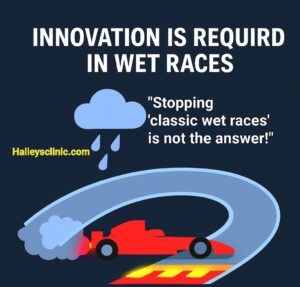
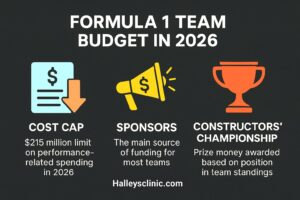
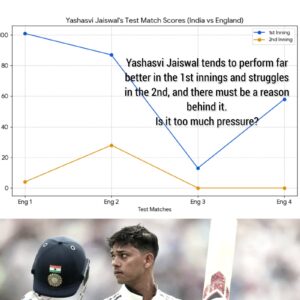
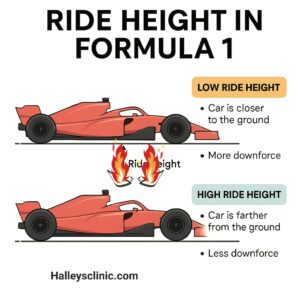
1 thought on “What Is the Ideal Ride Height for F1 Cars? Exclusive”